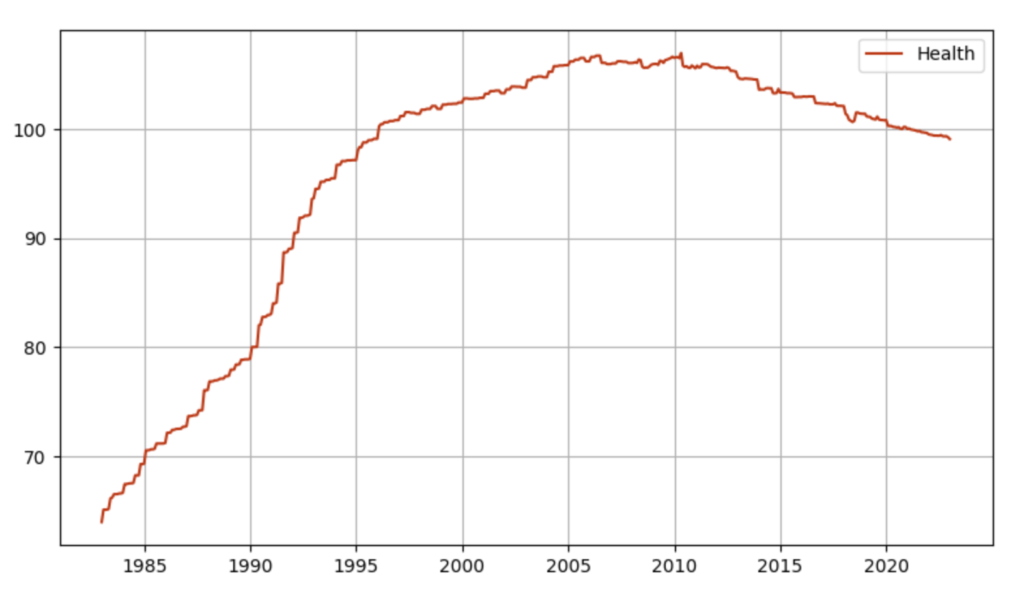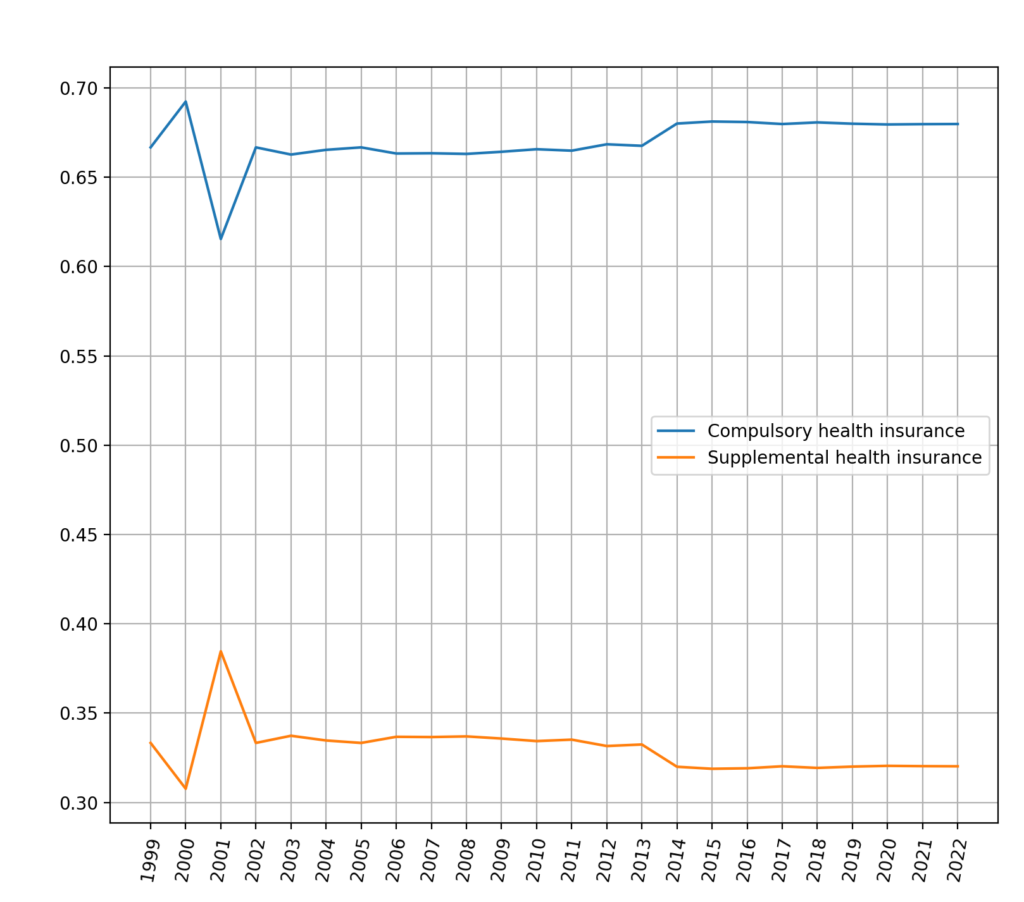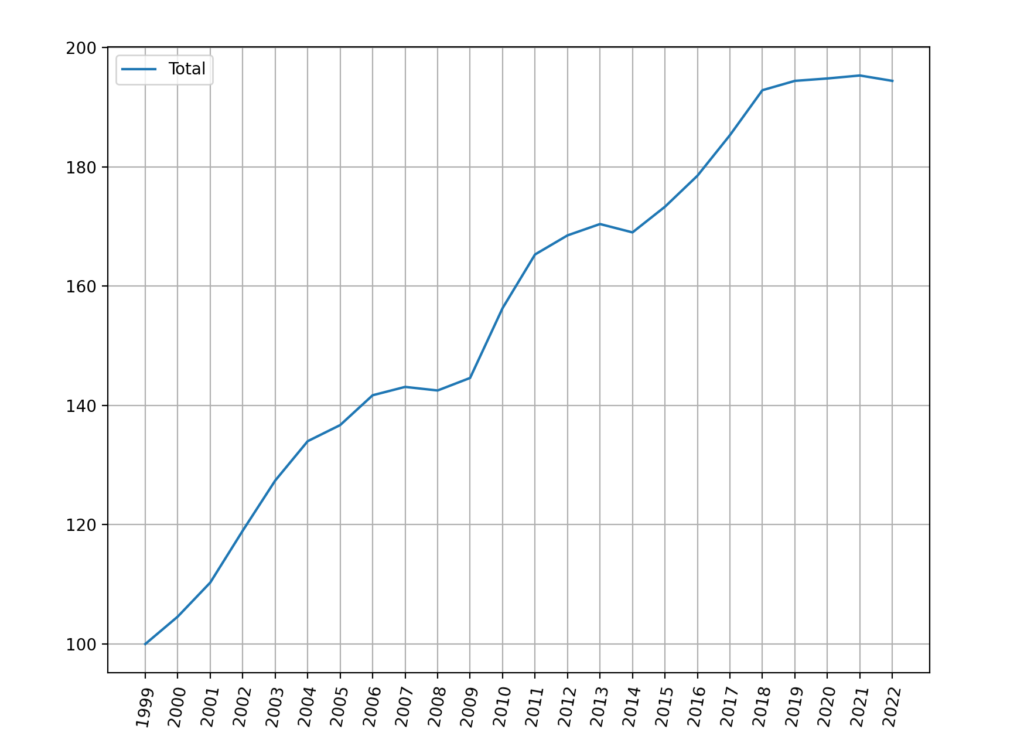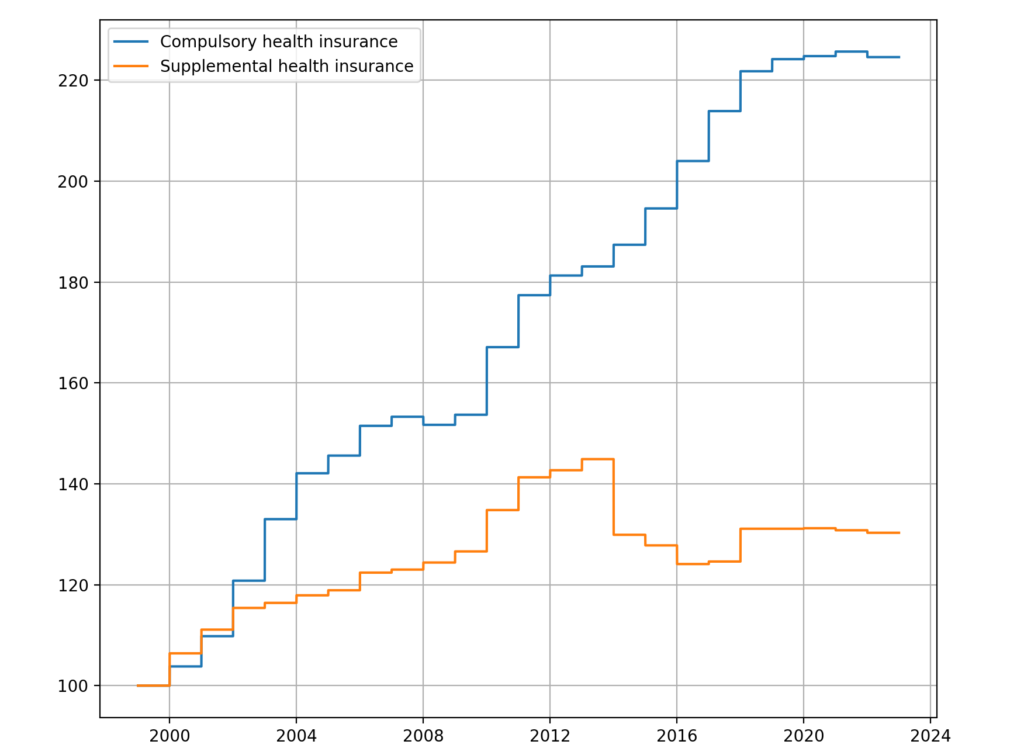Are you also concerned that the health premiums are going to increase again in 2024? I showed that the health costs measured by the LIK actually have decreased by about 7.4% since 2010 in the blog entry in March 2023. I visualize this development again in figure 1 below. This feels weirdly at odds with the perceived increase in health premiums that I had to pay over the same period and also what I have read in the press just lately. Hence, I decided to analyze a bit more on how exactly the health premiums evolved in the past in Switzerland.

Health insurance premium index
The Swiss authorities track the evolution of the health premiums via the health insurance premium index. On the one hand, the health insurance premium index which is called Krankenversicherungsprämien-Index (KVPI) in German tracks the development of the premiums for the compulsory health insurance. On the other hand, it also tracks how the premiums of the supplemental health insurances evolve. Both flow into the overall health insurance premium index with corresponding weights.
The index considers the average premiums for the compulsory health insurance estimated by the federal office of public health (FOPH). The government collects the data for the premiums for the supplemental health insurance by surveying insurance companies. The authorities created this index in 1999. You can see the weights for both sub-indices in the overall index for the full period in figure 2 below.

As you can see the lion’s share in the index stems from the compulsory health insurance with around 67% with the premiums of the supplemental health insurance have a weight of around 33%. To be honest, I am not entirely sure on what basis they decide those weights. However, I could imagine that the overall sum paid for the health insurance and the supplemental health insurance plays a role in the determination of those weights. The data source stems from the Swiss Federal Statistical Office and can be found here.
So what’s the increase in health premiums?
Right. So far I have only given you the rundown on how the index is computed, the more interesting question is how it evolved between 1999 and 2022. Figure 3 below shows exactly this evolution. You can see that there were three major periods during which the index increased year over year. Namely between 1999 and 2007, between 2008 and 2013 and between 2014 and 2021. There was always one year in between those periods during which the index slightly dipped. Overall it can be noted that the overall index increased to 194.4 from 100 i.e. it almost doubled during this period. It is also noteworthy that the index has increased around 34.44% since 2010 while the health category in the LIK (CPI) dipped down by 7.4% as noted in the introduction for the same period.

What drove the increase?
The increase of the insurance premium index from 1999 to 2022 almost doubled as depicted in figure 3. Since this index consists of the two sub-indices for the compulsory health insurance premiums as well as the supplemental health insurance premiums, it is very interesting to check on how these sub-indices evolved. Figure 4 below shows both sub-indices. You can see that the compulsory health insurance index increased virtually every year. It increased by a whopping 124.6% between 1999 and 2022! This number does not even include the expected increase for the average premium for 2023 by 6.6% as reported by Swiss Federal Council in September 2022. If we add this amount, we arrive at an increase of 132.8% between 1999 and 2023. This translates to an annualized increase of around 6.2%.
On the other hand, the premiums for the supplemental health insurance only kept increasing until 2013 and then fell again (orange line). Over the period of 1999 and 2022 they increased by 30.3%. Hence, the driver for the health insurance premium index has been clearly the development of the compulsory health insurance. In my opinion this is highly critical as no person that lives in Switzerland can evade the compulsory health premiums as they are like the name indicates “compulsory”.
